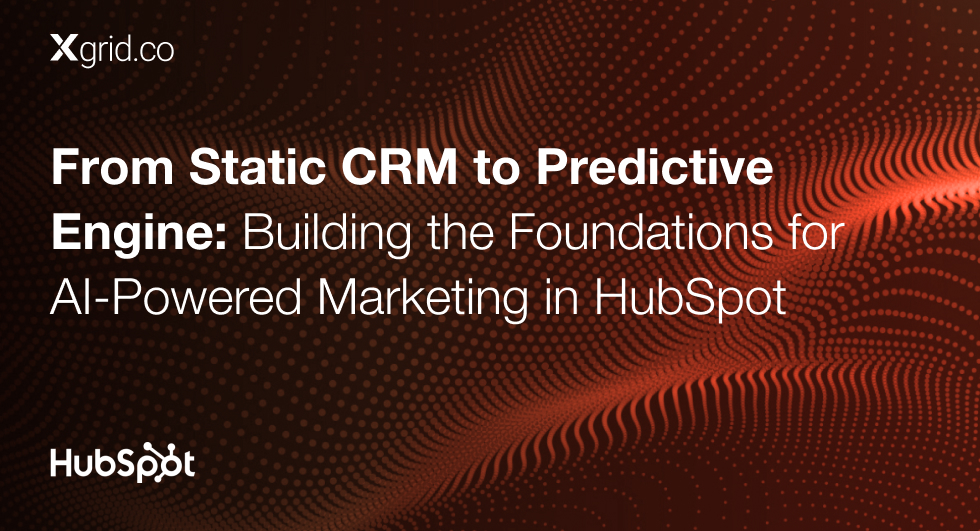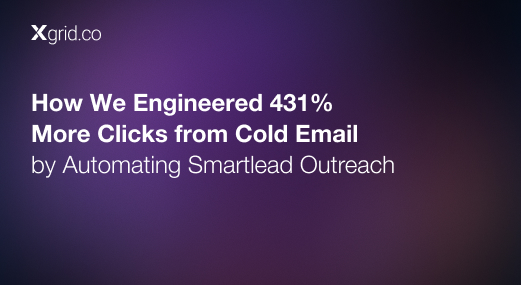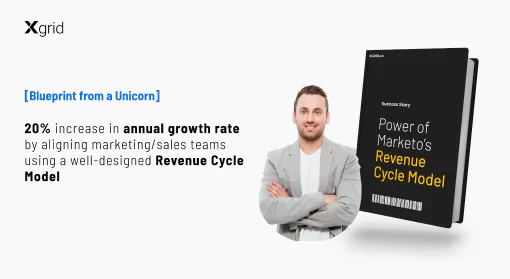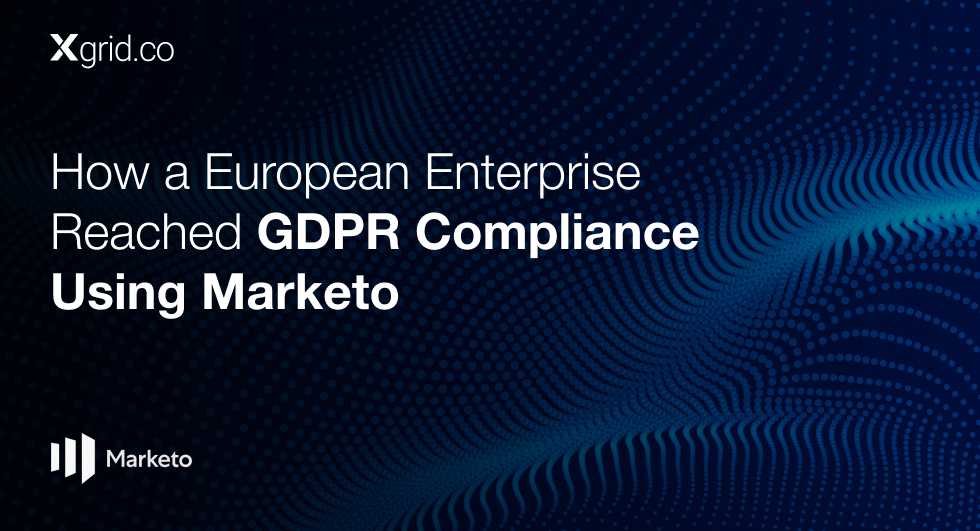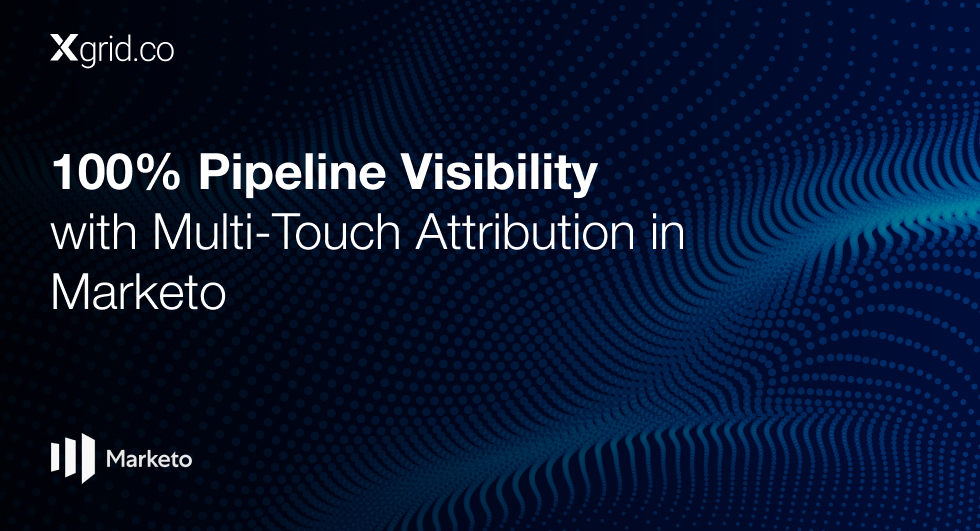How Xgrid Built a Marketo Report with an AI-Powered, Sales-Led GTM
Business Goal
Use Sales Conversations to Build a High-Trust Asset That Converts
Xgrid’s SDRs set out to launch an initiative that didn’t rely on marketing funnels or lead magnets. Instead, they leveraged cold outreach and expert interviews to engineer a revenue-focused GTM asset—the Marketo Expert Report.
Explore the full Marketo Expert Report and see how it turned real interviews into GTM strategy
The objective wasn’t “content marketing.” It was sales-led GTM execution:
✔ Start real conversations with the right people
✔ Capture the market’s pain points through structured, personalised 60+ interviews based on each individual’s specific Marketo or Marketing Automation experience
✔ Package those insights into a report that prospects actually want
✔ Use that report to fuel content, campaigns and conversations
The Problem: A Report Without Real Insight Is Just a Guess
Before this campaign, the Xgrid team set out to create a flagship Marketo report—one that would position them as experts in the Marketing Ops space and open doors for sales conversations.
But there was a core problem: the team had assumptions about pain points, not evidence.
– Start real conversations with the right peopleThey knew attribution and lead scoring were common challenges, but not how those challenges showed up in real teams.
– They had rough outlines, frameworks, and content ideas—but lacked the specificity that makes a report truly valuable.
– Internally, the team had deep technical expertise in Marketo—but it was locked in silos and scattered across tribal knowledge.
Without fresh, first-hand input from practitioners in the field, the report risked becoming just another generic ebook—too broad to be actionable, too shallow to be trusted.
What Xgrid needed was a way to ground their expertise in the lived experiences of real operators. They didn’t just need data—they needed depth, language, and relevance straight from the market.
That required a different kind of process. One rooted not in assumptions, but in conversations—to uncover real-time, validated pain points.
The Solution: Use Interviews to Replace Assumptions with Evidence
To transform a vague content idea into a high-impact asset, the Xgrid team made a strategic decision: they would not build the report in isolation. Instead, they’d build it with the market.
Rather than guessing at pain points from behind a whiteboard, the outbound team launched a structured interview campaign. The premise was simple:
“If we want our report to be relevant, it needs to be written by the people we’re trying to sell to.” — Saad Arshed, COO, Xgrid
SDRs shifted their outreach from pitching services to inviting participation:
“We’re interviewing MOPs leaders for a Marketo report. Would you be open to sharing your experience?”
This approach unlocked two outcomes at once:
– It gave Xgrid real-world insight into how Marketing Ops teams actually experience problems with Marketo—across attribution, lead scoring, lifecycle, reporting, and 35+ other use cases.
– It created a natural, high-trust reason for prospects to engage—because they were being invited to share, not sold to.
These interviews became the raw data for the report—and more importantly, the bridge between internal expertise and external reality. The result wasn’t just better content. It was a smarter go-to-market strategy, backed by the language, frustrations, and priorities of the exact people Xgrid wanted to reach.
Execution Roadmap: From Cold Conversations to Conversion Engine
This wasn’t just a content project—it was a pipeline-generation system built from the ground up by the Xgrid outbound team. The process was structured into three deliberate phases: outreach, analysis, and activation. Each step was owned by SDRs, and every outcome fed directly into the revenue engine.
Phase 1: LinkedIn Prospecting, Scheduling, and Conducting Interviews
The foundation of this campaign was outbound discipline. The goal wasn’t to “gather insights”—it was to engage ideal buyers in a non-transactional, high-trust way.
Finding the Right Contacts
– The Research Analyst and SDRs built a contact list of 100+ MOPs professionals using LinkedIn Sales Navigator.
– These professionals were filtered on the basis of their functions and positions in the company (higher-level personnel like Vice Presidents and Managers). There was also a focus on company size, geography and other relevant details to ensure that the interview will both provide the team with actionable insights and turn into a lasting connection.
– Each profile was manually vetted to ensure strategic fit and messaging relevance. The team reviewed recent posts, comments, and engagement patterns to confirm that the individual not only matched the technical criteria, but also actively contributed to the Marketo or RevOps conversation—making them a strong fit for inclusion in the report.
Outreach and Interview Scheduling
– SDRs initiated outbound with a personal, non-sales message:
“We’re compiling a report featuring real Marketo practitioners. You’ve likely seen it all—mind sharing your experience?”
– The positioning flipped the dynamic: it wasn’t a pitch—it was an invitation.
Calendar links were embedded into replies, and follow-ups were handled via email and InMail. Over 60 interviews were successfully scheduled over a rolling 6-month period.
Conducting and Recording the Interviews
– Zoom interviews were led by SDRs, guided by 8–10 personalized questions.
– The interviews explored advanced areas such as sandbox and workspace management, attribution modeling, marketing-sales alignment, instance audits, scalable program templates, and dynamic lead routing strategies.
– Each interview had dual goals: capture insights for the report and build trusted relationships with high-fit prospects.
Phase 2: Using AI to Extract Pain Points and Draft the Report
With over 60 transcripts, the next challenge was synthesis. The team used AI tooling—but in a structured, GTM-relevant way.
Surfacing Pain Points with AI
– All Zoom recordings were transcribed and processed through a custom tagging pipeline using GPT-4 and Gemini.
– The AI models extracted recurring language, pain patterns, and thematic overlaps across interviews—turning hours of raw dialogue into structured, actionable insights.
– Pain points were grouped under clusters like:
❖ “Attribution Confusion”
❖ “Marketo-Salesforce Misalignment”
❖ “Campaign Execution Bottlenecks”
❖ “Scoring Logic Breakdown”
The result: 6 dominant pain points that consistently appeared across interviews—directly from the mouths of Xgrid’s target market.
Drafting the Report
– Each cluster was turned into a dedicated chapter of the Marketo Expert Report.
– Xgrid’s in-house specialists—experts in Marketo and Marketing Ops—reviewed and annotated the AI-generated summaries to ensure accuracy and depth. They enriched each section with real-world examples, tactical commentary, and proven solutions drawn from their own client experience. This human layer added credibility, nuance, and practical relevance to every chapter of the report.
– The final deliverable:
❖ 6 Core Chapters
❖ 15 Subsections with tactical use cases
❖ An Executive Summary tailored for C-level decision-makers
Read the full playbook: The Ultimate Marketo Report revealing insider strategies.
Generating Scalable Articles
– Separately, Xgrid’s content team leveraged the structured insights and chapter breakdowns from the report to generate over 200 SEO-friendly articles. Each article was designed around a specific pain point, keyword cluster, or use case surfaced during the interviews—ensuring technical accuracy while aligning with high-intent search behavior.
– These articles supported long-term inbound discovery by aligning with the exact search terms and operational questions Marketing Ops professionals were already Googling. Designed for sustained visibility, they helped Xgrid appear in front of the right audiences organically—continuously driving qualified report downloads long after the initial campaign launch.
Want to see how we used AI to generate 200+ technically vetted articles in just two weeks, all repurposed from existing content, clustered for GTM, and aligned with business goals?
→ Check out our full case study here
Phase 3: LinkedIn Activation and Download Conversions
The final phase turned the report from an internal asset into a pipeline-generation engine.
Creating LinkedIn Posts and Multichannel Activation
– SDRs who had conducted the interviews took the lead in turning insights into engagement by publishing two LinkedIn posts per week. Each post focused on one of the six core pain points uncovered during the interview phase, written in the voice of someone who had actually heard the problem firsthand.
– The posts followed a proven structure: short insight, pain point breakdown, and a CTA to download the report.
– This made the content authentic, relatable, and highly effective at engaging Marketing Ops professionals. Since most of the target audience was active on LinkedIn, it gave the SDRs a direct, high-leverage channel to reach and re-engage ICPs.
To further amplify distribution:
– A dedicated landing page hosted the report, with chapter previews, expert quotes, and contributor highlights.
– Memes, carousels, and short videos were shared via social handles to spark interest and reinforce brand tone.
– Targeted email campaigns were sent to Marketo users, each focused on a pain point + insight pairing to boost traffic and conversions.
– The report was embedded across the site—on service pages, blogs, and high-traffic content hubs to increase ongoing visibility.
Getting Engagement and Downloads
– Posts generated strong engagement: comments, DMs, profile views.
– Each download was tracked in HubSpot and tagged by source.
SDRs followed up with:
❖ “What stood out to you in the report?”
❖ “Is this a pain point you’re currently facing?”
These follow-up conversations transformed the report from a passive asset into an active sales qualifier. Prospects who engaged had already consumed value, aligned with the pain points, and viewed Xgrid as a credible, solutions-oriented partner. By the time an SDR reached out, the groundwork for trust and relevance was already in place.
Recirculation and Follow-Up
– The team launched LinkedIn retargeting campaigns based on profile visits, post interactions, and report download activity. This allowed them to re-engage warm prospects with tailored content and timely follow-ups.
– Some content was reshared or repackaged as carousels and DMs for targeted outreach.
– Leads who downloaded the report but didn’t engage were enrolled in a slow-drip outbound sequence. This allowed SDRs to reintroduce value over time and revive cold interest with minimal pressure.
What Made This Execution Model Work
– Outbound wasn’t a channel—it was the product.
Every interview, post, and follow-up came from outbound, not content marketing.
– AI was a multiplier, not a shortcut.
The team didn’t publish what GPT spat out—they used it to extract what real people were already saying.
– LinkedIn was the conversion funnel.
No ads. No long SEO ramps. Just smart posts, real pain, and structured follow-up.
– Every step drove pipeline.
Interviews created warm contacts → Pain points fed messaging → Report built trust → Posts drove demand → SDRs booked meetings.
Results
| KPI | Outcome |
| Interviews Conducted | 60+ |
| Core Pain Points Identified | 6 |
| Total Use Cases Extracted | 35+ |
| LinkedIn Posts Published | 40+ |
| Qualified Report Downloads | 100+ |
| Time to Execute | 6 Months |
Conclusion: Outbound-Led GTM, Engineered for Trust and Pipeline
This wasn’t just a report. It was a strategic GTM motion—led by SDRs, built on real conversations, and designed to create trust before ever making a pitch.
By replacing traditional cold outreach with a value-first approach, Xgrid was able to:
– Start authentic conversations with hard-to-reach prospects
– Gather market intelligence straight from the source
– Turn those insights into a conversion-ready asset
Every step—prospecting, interviewing, synthesizing pain points, activating content—was orchestrated by outbound. No marketing detours. No templates. Just a structured system to turn ICP knowledge into trust, and trust into pipeline.
The Marketo Expert Report became more than a deliverable—it became a door-opener. A reason to connect. A tool to engage. And most importantly, a signal to the market that Xgrid doesn’t just understand Marketing Ops problems—they’ve mapped them, solved them, and helped others do the same.
Download the Marketo Expert Report that fueled this entire outbound-led campaign.
This case study proves that outbound isn’t about messaging volume. When executed right, outbound becomes a full-cycle GTM engine that builds credibility, sharpens positioning, and drives real revenue momentum.
